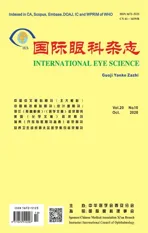Evaluation of intraocular penetration of levofloxacin by high performance liquid chromatography
2020-10-09MahsaHasanzadeh1VafaSamarei2AmirHeydari
Mahsa Hasanzadeh1, Vafa Samarei2, Amir Heydari
Abstract
INTRODUCTION
Endophthalmitis is a rare but serious complication of cataract surgery, producing significant ocular morbidity and frequently irreversible visual loss. Most common causes of post-cataract endophthalmitis are coagulase-negative staphylococci (70%), Staphylococcus aureus (10%), streptococci (9%), other gram-positive cocci, including enterococci and mixed bacteria (5%), and gram-negative bacilli[1-2]. Topical antibiotics preoperatively and postoperatively have been used to prevent this complication. Topical antibiotics might reduce ocular surface bacterial flora, but adequate penetration of antibiotics into anterior chamber (AC) is essential to reduce endophthalmitis. Fluoroquinolones are known for their broad spectrum of antibacterial activity against both gram-positive and gram-negative bacteria[3]. Levofloxacin is a levo-isomer of the D, L-racemate ofloxacin compared with older-generation fluoroquinolones (ciprofloxacin, ofloxacin) it has broader spectrum and more activity against gram-positive and gram-negative bacteria. Levofloxacin has moderate bactericidal effect against anaerobes[4-7]. Levofloxacin was determined with different methods like HPLC[8-9], electrochemical[10-12]and spectrophotometric method[13]. The current study was designed to evaluate concentration of levofloxacin 0.5% in the aqueous humor after topical drop instillation in patients undergoing cataract surgery.
SUBJECTS AND METHODS
The study was approved by an internal review board and informed consent was obtained from each patient. The study group consisted of 33 patients (15 females and 18 males) with mean age of 64.5±9.49 years who underwent elective phacoemulsification with intraocular lens implantation. The inclusion criteria included any patients with 18 years of age or older with significant cataract. Exclusion criteria included any patient with a known sensitivity to fluoroquinolones or who received topical ophthalmic medications, except lubricants, during the month before surgery. All patients received one drop of medicine every six hours for three days before cataract surgery and on the day of surgery. Last administration was one hour before starting surgery. The pupils were dilated with tropicamide (0.5%). After preparation and draping of the eye, 0.1-0.15 mL of aqueous fluid was aspirated by paracentesis using a 30-gauge needle on a tuberculin syringe.
Levofloxacin hemihydrate was purchased from Aurobindo Co. Acetonitrile, triethylamine, and methanol were obtained from Merck (Germany). Orthophosphoric acid was purchased from BDH (England). All calibration standard samples were prepared every day. The mobile phase was isocratic consisting of 1% triethylamine (pH=3)/acetonitrile (86/14, v/v). The pH of 1% triethylamine was adjusted to 3.0 using phosphoric acid[14]. The flow rate of mobile phase was modulated on 1.0 mL/min. The run time was 10min per each injection. 20 μL was the volume of each sample that was injected. Manual sample injections were carried out using a Rheodyne model 7725I injector. Chromatographic analyses were carried out on a Cecil Adept system Binary Gradient liquid chromatography (Cecil, England) equipped with a two adept CE 4100 dual pistons pump and a Ultrafluor chrom Tech fluorescence Detector (Model LC 305, USA). Chromatographic separation was performed on HI-5, C18-100A (10 cm × 4.6 mm id.) reversed-phase column (Hichrom, England). The wavelengths of fluorescence detector were set to 294 nm (excitation) and 446 nm (emission).
All samples were stored and labeled in Eppendorf vials below -20°C. Then, all the collected samples were carried to the Center of Cellular and Molecular Research laboratory at the Urmia University of Medical Sciences for analysis. The samples were thawed, mixed for one minute and centrifuged for 10min at 3000 g and 20 μL of the clear supernatant injected into the column of HPLC analysis to assay levofloxacin concentrations.
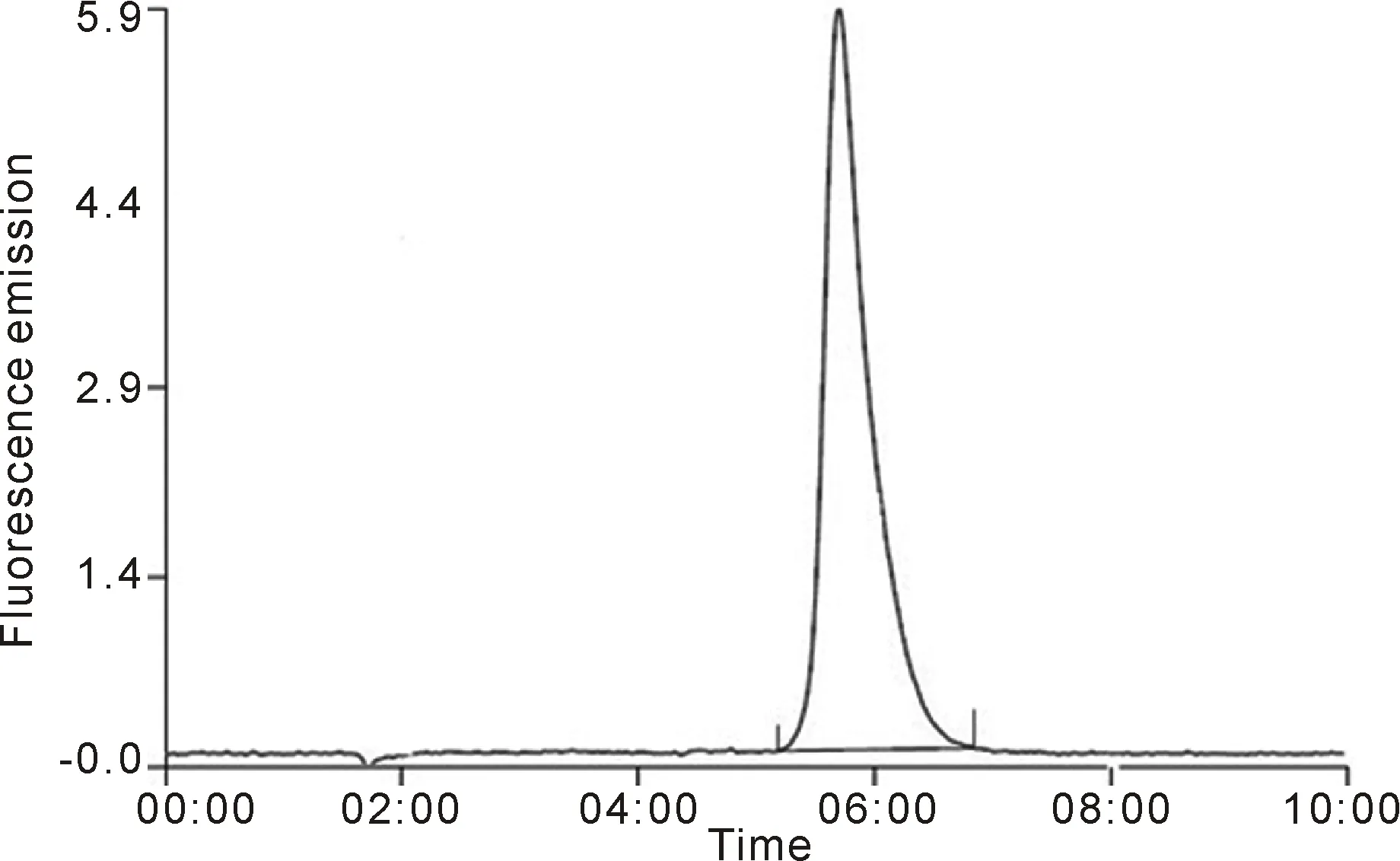
Figure 1 Representing the chromatogram correlates to levofloxacin with excitation and emission wavelengths 24 and 446 sequence. Moreover, retention time was 05:42.4min showing levofloxacin with a concentration of 0.5 μg/mL.
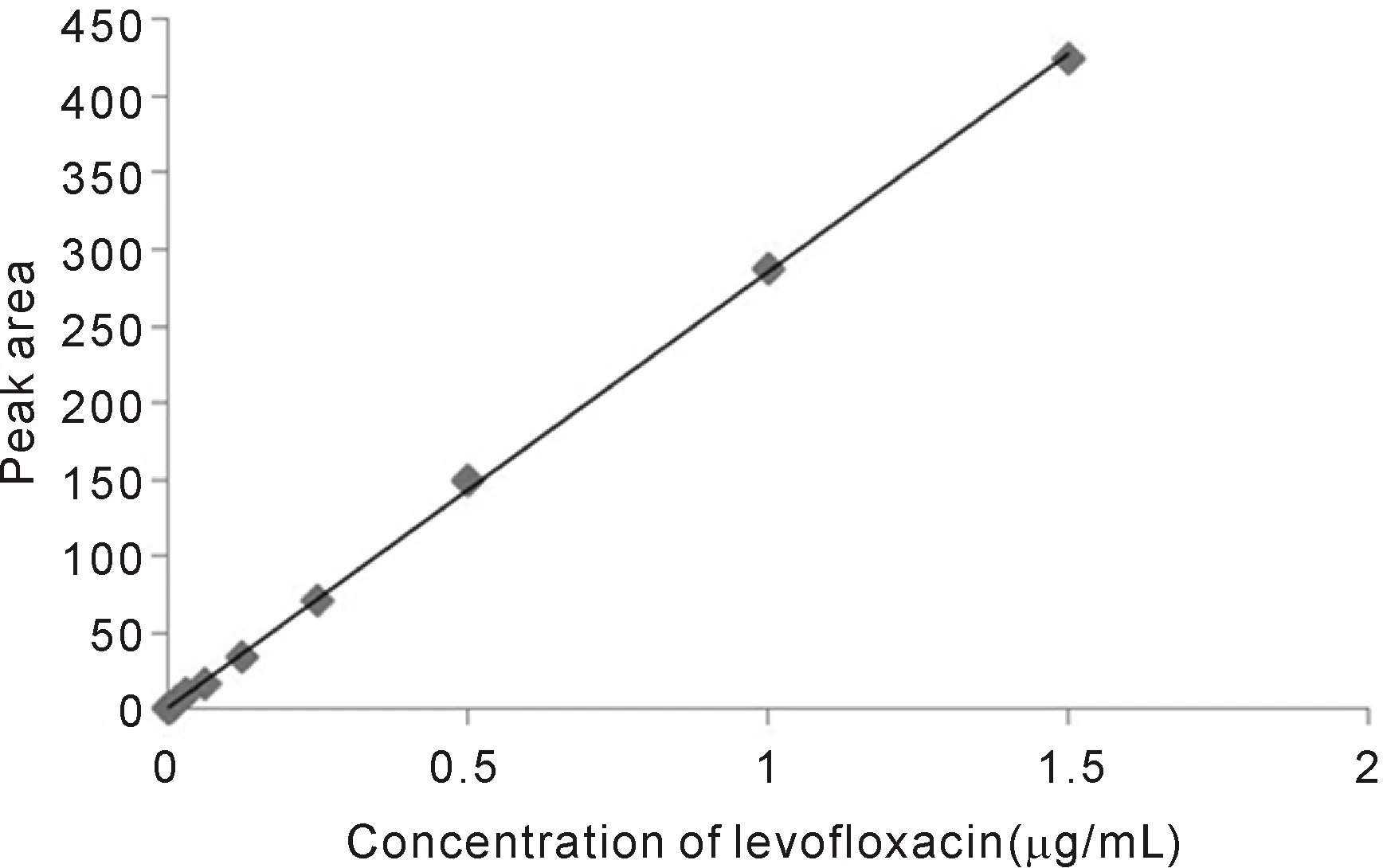
Figure 2 Calibration plot corresponds to concentration of levofloxacin.
RESULTS
Concentrations of levofloxacin were successfully measured by high performance liquid chromatography (HPLC) method without any interfering peaks. Chromatogram for the assay of levofloxacin concentration was shown on Figure 1. As observed in Figure 2 according to calibration curve, there is a linear relationship between the concentration of levofloxacin and peak area in a wide range of 1.95×10-3-1.50 μg/mL. The equation of the calibration curve was as follows: Y=284.62X+0.6742 with a correlation coefficient (r2) of 0.9997, where Y is the peak area and X is the concentration of levofloxacin (μg/mL). Mean concentration was 0.3399±0.03405 μg/mL.
Table 1 shows the precision and accuracy of the method. The coefficient of variation percent (CV%) ranged from 2.37-1.91 for intra-day experiments that were repeated three times on the same day. CV% for inter-day experiments that were repeated over a period of three consecutive days was calculated in the range of 0.89-2.93. The accuracy of the assay ranged from 94.37-102.82 for intra-day experiments and 94.40 to 102.82 for inter-day analysis. Therefore, the proposed method possesses satisfying precision and accuracy. Concentration of levofloxacin in human ocular aqueous was illustrated in Figure 3. No adverse reactions were reported after the use of levofloxacin drops.
DISCUSSION
Endophthalmitis typically presents as a moderate to severe infection 5 to 7d after surgery. Less commonly a chronic, indolent form presents several months after surgery and is usually caused byPacnes. Post-operative bacterial endophthalmitis is caused by gram-positive microbes in majority of isolates. Infection that caused by streptococci and Gram-negative bacteria such as Pseudomonas aeruginosa have a poor visual prognosis[1-2]. The level of levofloxacin is unable to reach MIC90 for most common microorganism responsible for endophthalmitis (Table 2).

Table 1 Intra-day and inter-day precision and accuracy data for evaluation of levofloxacin concentration by HPLC
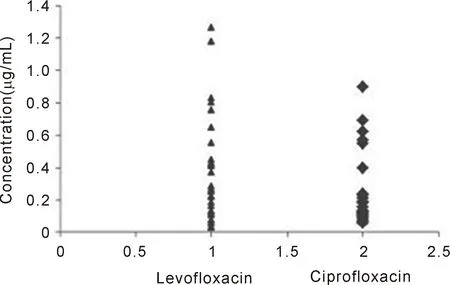
Figure 3 Concentration of levofloxacin in aqueous humor after administration of levofloxacin 0.5%.
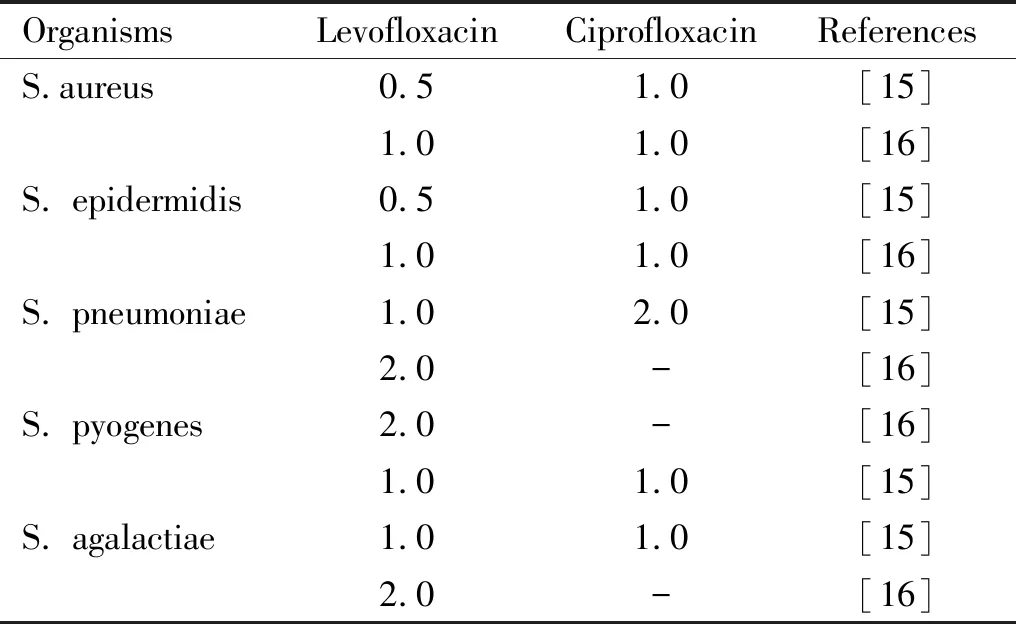
Table 2 Representative MIC90 values for Staphylococcus and Streptococcus Strains reported for levofloxacin and Ciprofloxacin for several ocular pathogens MIC90 (μg/mL)
Despite the use of the best available treatments, the visual prognosis of patients with intraocular infections remains guarded[17-18]. Levofloxacin possesses a wide spectrum of bactericidal activity against both gram-positive and gram-negative bacteria, as well as a typical pathogens such as Mycoplasma, Chlamydia and Legionella. Concerning ocular penetration, levofloxacin appears to have several advantages over other fluoroquinolones. Levofloxacin is highly water soluble, which enables the aqueous solution to be as high as 2% at neutral pH (35.8 mg/mL) and for this reason high concentration aqueous solutions of levofloxacin commercially available (0.5%). Furthermore, because levofloxacin consists of only the active L-isomer of the D- and L-racemate ofloxacin, levofloxacin is roughly twice as biologically active as other antibiotics in the anterior chamber[7,19-20].
In other studies results were higher than mean levofloxacin concentration in our study. These studies used pulsed deliverylevofloxacin 0.5% before cataract surgery. (For example every 10min for 5 doses[21]or every 15min for 4 doses[22]Mean levofloxacin concentration in pulsed delivery was much higher than our report. 1.135±0.589 μgmL[21]and (1.139.9±0.717 μg/mL) respectively[22]. Sundelinetal[23]in 2009 reported the higher anterior chamber level of levofloxacin, because they were administereted the medicine as pulsed methods.
However, the difference in the anterior chamber concentrations might be mainly attributed to the difference in the concentration of the administered eye drop solutions. The previous studies have showed that frequent dosing of the antibiotics on the day of surgery give the highest concentration in the anterior chamber[23]. The frequent dosing of levofloxacin 0.5% eye drops immediately before or after surgery helps prevent the development of postoperative endophthalmitis.
Kochetal[22]showed that the concentration of the drug in the anterior chamber correlated negatively with the anterior chamber depth and volume, which must consider to explain the low concentration of levofloxacin in my studies. Some studies detected correlation between fluoroquinolone concentrations and the corneal diameters or corneal surface areas might have influenced drug uptake.
Kesseletal[24]published a review article deals with the use of topical antibiotics in the prevention of endophthalmitis. Three days of topical antibiotic treatment reduces the number of positive conjunctival samples by approximately 50%. It means after topical antibiotic a significant number of bacteria remain in the ocular surface treatment reduces the number of positive conjunctival samples by approximately 50%[24]. Topical antibiotic therapy was not found to lower the rate of endophthalmitis in the ESCRS study[25]. In the conclusion, the researcher reported that could notnd any evidence that topical antibiotic treatment after cataract surgery lowers the risk of endophthalmitis. As there is no documented eect of topical antibiotic treatment and its use may be associated with concern for selection of resistant bacterial strains, we cannot recommend using it[24].
Results from the present study demonstrate that topical administration of levofloxacin 0.5% before cataract surgery with routine dose (one drop every 6h) fail to reach MIC90 for most common microorganism causing acute bacterial endophthalmi. Thus, further researches required before prescription of these two drugs. Clinical application of routine dose of levofloxacin that more than 80%-90% of ophthalmologists use it, can not be trustworthy for prevention of discussed infections.
